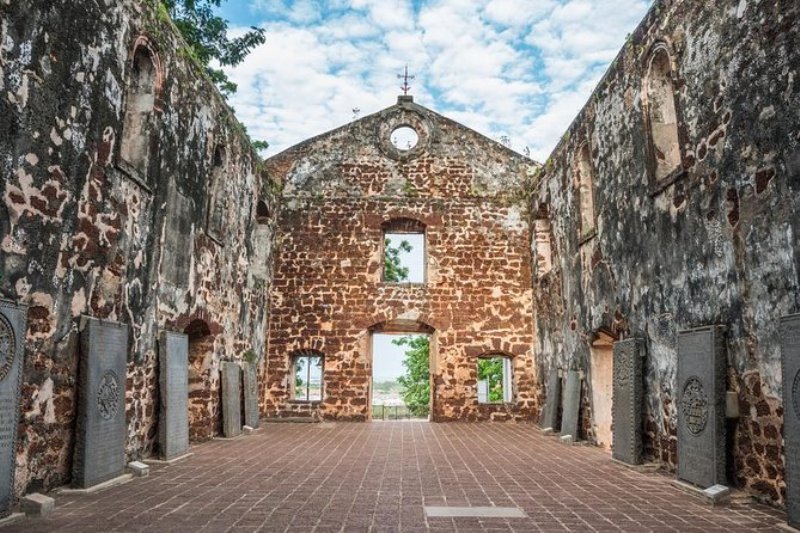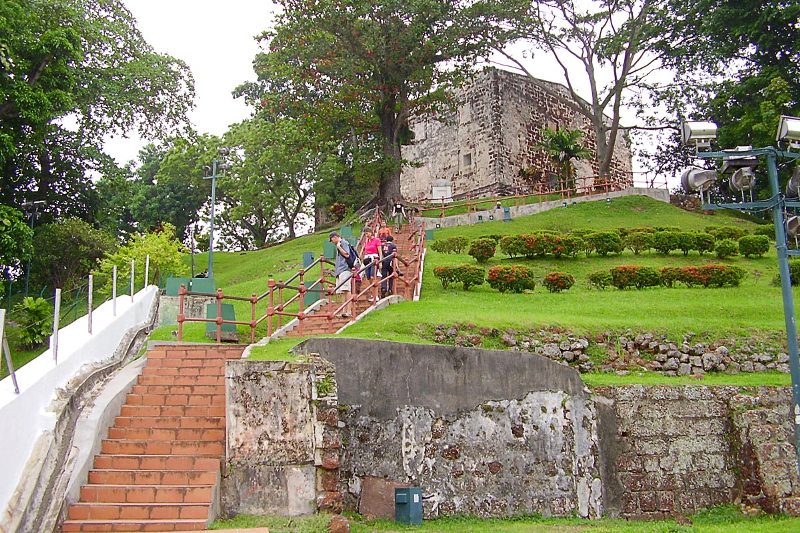Bukit Melaka (St Paul's Hill)
The Melaka State Government has agreed to rename Bukit St. Paul to Bukit Melaka which is believed to be the original name of this hill. The name Bukit Melaka had been used in Western writings during the colonial era and also by scholars in Malaysia after the country's independence to this day.
Looking back to the writings during the Melaka Malay Sultanate period, there had been no mention of Bukit Melaka or St. Paul’s Hill recorded by sailors from China, Arab countries or the West who came to visit Melaka. Nevertheless, in Sulalatus Salatin (Malay History) by A. Samad Ahmad, the name of Bukit Melaka appeared in the story of Sultan Alau'd-Din Riayat Syah together with Hang Isap going after thieves. The description in this story is similar to the conditions of the surrounding areas of the hill which included a palace complex, hills, rivers and bridges as illustrated in sketches and pictures of the hill taken from Western sources.
Similarly, during the Portuguese colonial era, there was no mention of St. Paul’s Hill. At that time, this hill was known by several names such as Nossa Senhora do Oiteiro (Our Lady of the Hill), Monte Dalimaria (The Hill of the Animal) and others or otherwise known as just the hill. The name of St. Paul was only mentioned around the 1620s in reference to the residence of the Society of Jesus (College of the Jesuits), which was not a church. On the other hand, the Hill of Malaca was mentioned by Alfonso de Albuquerque and Tome Pires, while Manuel Godinho de Eredia, a cartographer, had drawn a map of Buquet Malaca, the administrative site of Melaka since the time of Parameswara, with sketches that resembled the areas around the hill.
Meanwhile, there is a Dutch record stating that the church on this hill was the Church of St. Paul, although the name of St. Paul had been used in reference to the residence for the Society of Jesus (College of the Jesuits). The misnomer apparently occurred when the Dutch began to take control of Melaka, despite the difference between the denominations of Catholicism and Protestantism. The Dutch still called it the Church of St. Paul though it was used only on days of festivities. Around 1753, religious activities were no longer carried out in the church and it was instead used as a burial ground and remained so. Thus, it is mostly likely that the hill came to be called St. Paul’s Hill during the Dutch colonial rule of Melaka in conjunction with the name of the church that sat on it.
Writings by both local and Western writers and sketches by Eredia, however, point to both the existence of Bukit Melaka during the Malay Sultanate of Melaka and its location. To date, there are many writings by local scholars, either in the form of books or articles, that refer to the hill as Bukit Melaka.
In light of the desire to return to local names from colonial names and better reflect the culture and heritage of Melaka and instil a patriotic attitude and love for the country among the people, and considering the accounts cited above, the hill that used to be known as St. Paul’s Hill is now named Bukit Melaka.










Mohon kekalkan nama asal bukit ini. iaitu bukut melaka
Alhamdulillah ..terbaik,semoga usaha ini diberkati Allah…Aamin